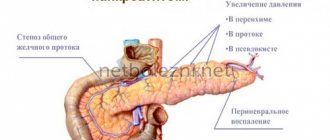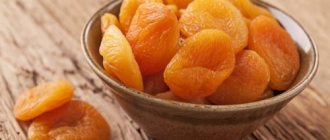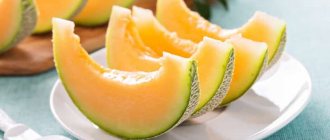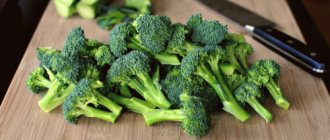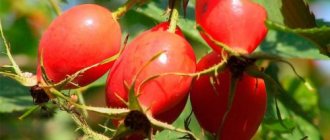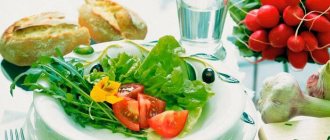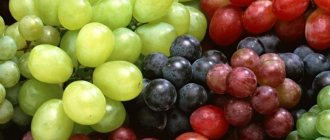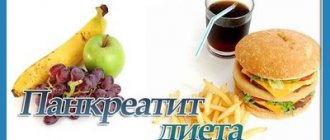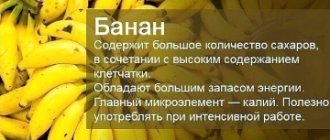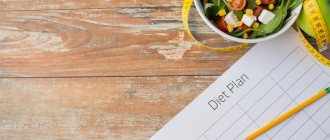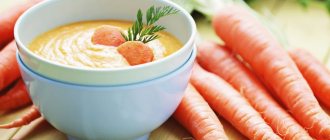Many patients suffering from the progression of the inflammatory process in the pancreas area ask the question: “Is it possible to eat pasta with pancreatitis, because now the daily menu should be dietary?” Pasta is considered not only a permitted food product, but also necessary in the presence of pancreatic pathology. This is explained by the fact that pasta is easily broken down, and the stomach, like the entire digestive system, absorbs it without much strain. But even among pasta products, there are varieties that are not recommended to be consumed so as not to cause much harm. In today’s review, we’ll take a closer look at which pasta is allowed to be consumed for pancreatitis, and which one is better to avoid, what benefits they can bring to the body, how to choose them correctly and how best to prepare them.
Factors of occurrence and symptoms of pancreatitis
The course of pancreatitis is characterized by constant relapses, which occur due to the release of insufficient amounts of hormones and enzymes. The point is not even in constant relapses, but in the fact that with each subsequent one the condition worsens. The tissues are gradually destroyed, which subsequently threatens serious health problems.
It is very important to remember that inflammation of the pancreas can indicate the independence of the disease, or be a manifestation of other pathologies (liver cirrhosis, alcohol intoxication or atherosclerosis).
Remission
When remission occurs, it is recommended to continue taking foods that were normally accepted by the body during the exacerbation phase. The only logical condition: continue to use pasta as a side dish for light dishes. By light we mean dishes that are not cooked in a frying pan; sunflower oil is not used in cooking; there are no fatty, spicy or seasonings. Eating such products for pancreatitis is tantamount to provoking another attack.
You should eat pasta in small portions, not exceeding the daily allowance. At any stage, the serving capacity is 200-300 grams, depending on the person’s reaction. The body with an inflamed pancreas reacts better to hard varieties.
Boiled vermicelli casserole recipe
Vermicelli and noodles are types of pasta allowed for pancreatitis. Vermicelli can be used as a side dish and as a base for casseroles. We offer a simple recipe:
- 100 g pasta, boiled in advance;
- 1 chicken egg;
- sugar, two teaspoons;
- cottage cheese, 75 grams.
Pre-mashed cottage cheese is mixed with sugar in a container. In a separate bowl, break the egg, beat it well and add it to the curd mass. Vermicelli is added, and pre-chilled. The baking dish is greased with butter, the mass is laid out, the mixture is left in the oven for 10 or 15 minutes. You should carefully monitor the absence of crust on the casserole.
Making homemade noodles
Another option to try an original dish is homemade noodles. The product can be easily frozen without losing its beneficial properties. For preparation you will need:
- three chicken eggs;
- 300 g durum wheat;
- a pinch of salt to taste.
The eggs are broken in a separate container and beaten well. The flour needs to be poured into a container (or on the table - this is an option). Make a small depression in the resulting mound and pour in the beaten eggs. The dough will be tough, you need to knead the substance for at least half an hour. When the dough becomes elastic, take a break.
Place the dough in a special bag prepared in advance and leave for 40 minutes. When the time is up, remove and cut into small slices. Roll each piece in flour and shape. You will need to make several layers, no more than a millimeter thick, leave for 10 minutes to dry, then cut into noodles. It takes 5-7 minutes to cook homemade noodles, and the product is ready to eat.
Of course, it’s easier to boil store-bought noodles, but homemade noodles, without unknown additives, will seem several times tastier and healthier.
Do not despair when you find out the diagnosis - chronic or acute pancreatitis. Fortunately, the diet for illness is not as ascetic as it seems at first.
Symptoms of pancreatitis
Main symptoms of pancreatitis :
- Feeling of fullness in the stomach after eating.
- Pain in the navel area.
- Constant heartburn, bloating and flatulence.
- Nausea.
- Bad breath.
- Belching.
- Swelling of the face (read a useful article on how to quickly get rid of swelling on the face).
- Fat stool.
- Dry skin.
- Redness of the skin.
In addition, a large number of toxins accumulate in the body, which can poison the body.
Methods for preparing pasta during illness
There are several rules for properly preparing pasta:
- It is better not to overcook pasta when cooking.
- Long noodles need to be broken into smaller pieces.
- When the products are cooked, they are poured into a colander, where they are washed. After this, add vegetable oil and mix thoroughly.
- Fried foods are prohibited.
- It is possible to prepare pasta casseroles, but you need to observe the body’s reaction.
Features of a special diet
What can you eat if you have inflammation of the pancreas ? The diet of a person who suffers from pancreatitis should contain a sufficient amount of protein. But fat should be present in minimal quantities. This optimizes the functioning of not only the pancreas, but also the gallbladder. If you add fat, it should only be of vegetable origin, and even then in small quantities. Protein will serve as a building material for restoring the structure of the pancreas. Such patients can consume carbohydrates. Only if the risk of developing diabetes is increased, then their quantity also needs to be moderated.
diet for pancreatitis
In addition, it is worth significantly limiting the level of salt in your diet. The fact is that with pancreatitis the gland swells, which causes pain. It is the reduction in the level of salt in the diet over three weeks that will lead to normalization of its size. In case of serious exacerbation of the pathology, you need to eat only pureed and gentle food. All food for pancreatitis should be warm so as not to cause irritation and is better absorbed. All food should be bland, no seasonings or spices. Only fresh and high-quality products.
Over time, you need to enrich your diet with meat, fish, egg whites and dry bread. But meals for pancreatitis should be small, although frequent. Eating up to six times a day is considered optimal.
Are all pastas equally safe?
People suffering from pancreatitis know from their own experience that it is very difficult to choose a balanced diet from acceptable foods. A person who first becomes acquainted with the features of a therapeutic diet often gets upset and believes that almost all familiar food has been banned. In fact, this is not the case, and over time, everyone gradually expands the menu, including new interesting, tasty, and most importantly, healthy dishes. Gastroenterologists do not prohibit pasta, which is included in the daily diet of any family, but you need to know some features.
If you have problems with the gastrointestinal tract, when choosing pasta, you should pay attention to its composition:
- Pasta made from durum wheat is considered the healthiest and safest (it does not contain fat, but contains much more vegetable protein);
- Noodles and noodles made from soft wheat varieties are strictly prohibited for both chronic and acute pancreatitis, as they take a very long time to digest, thereby putting additional stress on the pancreas, which needs rest.
Today there is a huge selection of pasta in stores. Can I eat any of them? In order to choose the ones you need, you need to look at the packaging. Marking “Top grade. Group A" means that this product is actually made from durum wheat. Additionally, you can pay attention to the cost. Typically, the higher the price, the better the quality of the pasta.
Many people underestimate the beneficial properties of pasta. In fact, they contain quite a large amount of vitamins and minerals.
When is a diet prescribed for pancreatitis?
The diet needs to be changed as soon as pancreatitis is diagnosed . Particular attention should be paid to nutrition during an exacerbation of the disease. The main thing is to provide the patient with three main principles: hunger, cold and peace. During an exacerbation, you need to drink mineral still water, various decoctions and weak teas. After the most acute period has passed, gradually introduce vegetable broth and oatmeal broth into the diet.
how to eat properly when you have inflammation of the pancreas
For the subsequent period, it is worth maintaining fractional, gentle nutrition. It is better to stick to it for 6 to 12 months. This time is enough for the organ to recover. In addition, the patient will already get used to the new way of eating, and to life in general. Dietary restrictions outside the acute period are not too strict. You just need to follow them, and the result will exceed all expectations. A properly selected diet will help not only reduce the amount and time of taking medications, but also eliminate the need for surgery.
Very important! All therapeutic measures, regardless of gender, age and severity, must be agreed with a doctor. Only a doctor can optimally select medications and prescribe the correct diet. After all, only he has a correct idea of the state of the patient’s pancreatic gland based on additional research.
If you had to go on a diet for pancreatitis, follow the rules of nutrition so as not to encounter complications in the future.
Exacerbation
If the patient experiences acute pancreatitis, or there is an exacerbation of the chronic type, pasta is prohibited. If you use products made from wholemeal flour, the following will happen:
- the secretion of bile is activated (if the patency of the ducts is impaired, bile can enter the pancreas, causing even greater inflammation);
- bowel movements are reduced, patients often experience problems with digesting food, ranging from diarrhea to vomiting).
Exacerbation of pancreatitis
Higher grades are not a suitable option; they create excessive stress on the organs of the endocrine system and the pancreas.
Boiled pasta can be returned to the diet when the exacerbation subsides. You'll have to follow some rules.
How to cook pasta after an exacerbation
Recently the exacerbation stage ended, and the patient wanted some pasta. There is no point in abstaining. You will have to give up the product if after consumption the body rejects the food.
It is better to first break long pasta into small pieces of 2 cm. Throw into water and cook for 30 minutes. Products absorb moisture, starch is neutralized, and the product becomes heavier. Calorie content is also reduced. When the pasta is thrown into a colander and the water is drained, you can season the product with pre-melted butter.
If the body does not show resistance, prepare pasta casserole.
It is prohibited to fry pasta! Frying will have an extremely bad effect on the gastrointestinal tract.
Homemade noodle option
For lovers of culinary experiments, there is another recipe that allows you to make pasta yourself at home. In fact, this process is very simple: it does not require much effort, a lot of time, or complex ingredients. All we need is 300 g of durum wheat flour and 3 eggs. You can even determine the quality of flour visually: soft varieties are characterized by a pure snow-white color, but the flour that suits us has a darker shade.
After mixing the flour and raw eggs, place the mixture in a plastic bag and put it in the refrigerator for about 30 minutes. After this time, the dough must be removed and then rolled out into a thin layer, from which narrow strips (about 2 mm) will be cut. Before you start boiling, it is recommended to dry each side of the pasta - 15-30 minutes is enough. This product should be cooked like regular pasta - no more than 7 minutes.
If you get a lot of homemade noodles, the rest after drying can be placed in the freezer - this will not reduce the quality of the product.
Pasta dishes during exacerbation of the disease
People who have once experienced an attack of pancreatitis already know that in the first days of crisis, eating anything, including pasta, is strictly prohibited. The same applies to exacerbation of the disease. You must fast for 2-3 days; you can only take a decoction of chamomile or rose hips or regular drinking water. Such measures are needed to ensure complete rest of the pancreas, which is out of order and therefore cannot function normally. Any food, even dietary, makes the organ work, since it requires the production of enzymes necessary for the breakdown process. This greatly aggravates the situation and does not allow the pancreas to “come to its senses.”
As you fast, during the first few days, the organ regains its strength and gradually begins to function. But the diet at this stage has not yet lost its relevance: you cannot start eating suddenly, eating everything you want and, moreover, in excessive quantities. Otherwise, the symptoms that usually accompany acute pancreatitis may occur:
- Pain in the abdominal area;
- Flatulence and diarrhea;
- Nausea and vomiting;
- General malaise: weakness, drowsiness, loss of appetite.
For this reason, both nutritionists and gastroenterologists advise abstaining from food in the first days, and then, as symptoms weaken, introducing pasta or any other foods into the diet with extreme caution. You need to start with a minimum serving size (50 g), monitoring your body’s reaction each time. If absorption occurs well, gradually the amount of food can be increased to 100 g. By following these rules, as well as adhering to the correct method of preparing a pasta dish (and at this stage this is exclusively boiling), you will protect yourself from a relapse of the disease and maintain your good health.
What are the benefits and harms
Pasta saturates the body with useful substances. This product contains B vitamins, vitamins E and PP, potassium, magnesium, calcium, iron, copper, zinc. Properly prepared high-quality pasta satisfies the feeling of hunger for a long time, improves intestinal motility, is well absorbed by the digestive system and does not irritate the mucous membrane of the pancreas.
If the doctor's recommendations regarding the use of pasta for pancreatitis are not followed, this flour product can cause increased production of gastric juice and increase bile secretion, thereby increasing the load on the inflamed pancreas and increasing the symptoms of the disease.
Recipes for patients after an exacerbation
The diet, which is established for the patient immediately after the disappearance of pain and other phenomena accompanying the disease, is quite strict. Only easily digestible foods are allowed, and all food must be grated or crushed - this is necessary in order to facilitate the digestion process and eliminate the risk of mechanical injury to the gastrointestinal mucosa.
In fact, there are few options for dishes that can be made at this stage using pasta. Traditionally, for people who have recently experienced an attack of pancreatitis, pasta is simply boiled. However, you also need to be able to do this correctly - that is, as dictated by the diet prescribed for this disease. Let's look at the cooking scheme in more detail.
Spaghetti
To obtain boiled pasta, which a patient can safely eat in the first week after an attack, we will need:
- Spaghetti;
- A small amount of salt;
- 5 g butter.
Before placing pasta in a pot of water, there are two important rules to remember. Firstly, food in the first days after an exacerbation should be crushed. It is for this reason that it is recommended to break spaghetti into small pieces, the size of which will not exceed 2 cm. Secondly, you should assume that your portion will be small, so you need to take enough pasta, the amount of which will be approximately 50 g.
Having poured them into an enamel container, pour in water, its optimal amount is 2/3 - a large volume of liquid is required because the pasta absorbs too much water. Next, put the pan on the fire and wait until it boils. As soon as the process begins, the pasta should be slightly salted, but it is too early to turn off the heat. Typically, each package indicates the cooking instructions for spaghetti, so if you examine the back, you will probably find information regarding the boiling time there. Based on it, you will receive a correctly executed dish. Don’t forget to stir the spaghetti; you need to do this frequently, otherwise you risk getting a sticky product with a far from aesthetically pleasing appearance.
And finally, the last step is to place the finished pasta in a colander to drain the water and add a piece of butter to it, which, after mixing, will not allow them to stick together.
Recipe examples
1. Pasta casserole with boiled meat. Grind lean boiled meat in a meat grinder and season with a little butter. Place the boiled horns or scallops (300 g) in a colander, pour into a saucepan, pour in heated milk (1 glass) and leave for 10 minutes to swell. Then add an egg and a little salt to them. Line the pan with parchment paper and pour half of the pasta mixture into the bottom. Place meat filling on top. Cover it with the remaining pasta. Sprinkle the casserole with grated low-fat cheese. You can grease it with sour cream. Place in a preheated oven for 10–15 minutes.
2. Spaghetti with bechamel sauce. During the period of remission, you can diversify the menu by adding the famous sauce to boiled pasta or noodles. Only for pancreatitis is bechamel prepared without nutmeg, which stimulates the secretion of bile. A classic recipe based on milk, flour, butter, sugar and salt is suitable.

